Oncoplastic surgery for the conservative treatment of breast cancer in Perú’s National Cancer Institute
Gonzalo Javier Ziegler Rodriguez1,2, Marcelo Diaz Chavez2,3, Gabriela Guadalupe Calderon Valencia4, Jose Manuel Cotrina Concha4, Milko Raphael Garces Castre5 and Raul Mantilla6
1Clínica Ricardo Palma, Av Javier Prado 1066, San Isidro 15036, Lima, Peru
2Clinica Ziegler, Av Guardia Civil 990, San Isidro 15036, Lima, Peru
3Hospital Nivel IV Guillermo Almenara Irigoyen
4National Cancer Institute of Perú (INEN)
5Clínica Montesur
6Breast Surgical Oncology Department, National Cancer Institute of Perú (INEN)
Correspondence to: Gonzalo Javier Ziegler Rodriguez. Email: gonzaloziegler@gmail.com
Abstract
Background: Oncoplastic surgery for breast cancer (OPS) has been a surgical trend for the past 25 years. In 2012, OPS has been introduced as the standard treatment for a selected group of patients at the National Cancer Institute of Peru (INEN). The aim of this study is to describe our findings.
Methods: This is a retrospective and descriptive study that identified demographics, tumour-pathologic features and includes patients solely treated since diagnosis until late follow-up at INEN. These OPS patients were identified from the conservative treatment patients group by review of medical charts and creation of a database for periods December 2005 through December 2015.
Results: A total of 146 patients were ruled in by the inclusion criteria. All patients were Peruvian females, 56.2% being 51 or older. 93.8% had core biopsy diagnosis of breast cancer and 52.1% located at the upper outer quadrant. 79.5% patients had upfront OPS and the round block (43.2%) and reduction/mastopexy (23.3%) were the most used techniques. pT2 was the most frequent size (54.7%). We achieved negative margins in 134 patients (93.2%) in a single procedure. Of 29 patients, who had neoadjuvant treatment, 11 achieved pCR. Only 5.5% had pN2 or higher. 95.2% received complimentary external beam radiotherapy.
Conclusions: OPS has proven to be a reliable surgical option, both for aesthetic and oncologic outcomes. Important points for achieving these results are breast surgeons having properly trained under the OPS philosophy and knowing the patients’ characteristics for correct technique selection.
Keywords: oncoplastic surgery, breast cancer, Latin America
Copyright: © the authors; licensee ecancermedicalscience. This is an Open Access article distributed under the terms of the Creative Commons Attribution License (http://creativecommons.org/licenses/by/3.0), which permits unrestricted use, distribution, and reproduction in any medium, provided the original work is properly cited.
Published: 01/03/2018; Received: 30/10/2017
Background
Breast surgical oncology has three major precedents in which the European influence has played an important role. In 1878, Halsted travelled to Vienna to learn from the most famous surgeon in Europe, Theodor Billroth [1]. Back in Baltimore, he perfected and popularised ‘the complete method’ obtaining better results than his teacher, reporting 50 breast cancer (BC) surgical cases with only three recurrences, giving way to ‘Halsted’s radical mastectomy’ from 1894 onwards [2].
During the 1970s, Fisher in USA [3] and Veronesi in Italy [4] set the second precedent when exploring other treatment possibilities besides Halsted’s dogma and showed that breast conserving surgery with complimentary whole breast radiation (BCT) had comparable overall survival (OS) and disease-free survival (DFS) versus mastectomy. There was no added benefit in cutting more, so the BCT tendency started [5]. However, BCT still remained as a partial mutilation where asymmetries and deformities were not considered relevant as oncological results were more important than psychological and aesthetic damages. Plastic surgeons developed different ways to handle breast aesthetic problems and soon started using reduction mammoplasty techniques to reshape and reconstruct some BCT cases [6–8] and published different approaches for them [9].
The third event started in 1993 when Galimberti (plastic surgeon) and Veronesi (surgical oncologist) reported a case series in Milan for centrally located tumours where the remodelling of the breast followed the oncologic resection, obtaining acceptable aesthetic results in a single operating day [10]. Audretsch coined the term ‘oncoplastic surgery’ (OPS) for them and it is a surgical philosophy that merges plastic surgery techniques with oncologic clear margins and has gained global acceptance for the satisfaction of patients and their treating surgeons [11]. The French group led by Clough consolidated OPS as a third surgical option for breast surgeons besides BCT or mastectomy. They classified BCT preventable sequelae [12] and developed technical recommendations for OPS by quadrants of the breast. They made it clear that it is a new surgical option for which breast surgeons may receive specialised training [13].
The OPS philosophy was introduced to Latin American countries through specialisation courses led by the Spanish Benigno Acea [14]. Peruvian breast surgeons were no exception. Between 2012 and 2015 breast surgeons including residents and fellows from the National Cancer Institute of Peru (INEN) attended the courses taught by Acea and adopted OPS as a surgical standard for selected patients since 2012. The aim of this study is to analyse a subset of patients treated with OPS in the period 2005–2015 at INEN.
Methods
From December 2005 until December 2015, more than 1,200 breast conserving surgeries were performed at INEN. We retrospectively reviewed medical charts and built a database for OPS cases. Demographics, tumour characteristics, technical aspects of OPS, axillary surgery, adjuvant therapy, follow-up, and outcomes were collected. We processed information with SPSS v.22 through frequencies, percentages and measures (median, mean and range). Surgeries were carried out exclusively by the breast surgical oncology staff, residents and fellows at INEN properly trained under OPS philosophy. We included patients with confirmed BC diagnosis treated by OPS and received neoadjuvant or adjuvant systemic treatment and excluded patients with bilateral tumours, metastatic disease at diagnosis, patients with inflammatory carcinoma, patients with treatment in a previous institution (surgery, chemotherapy or radiation therapy), patients with incomplete data on medical charts and those lost at sight for more than 6 months in the follow-up appointment. Staging by American Joint Committee on Cancer 7th edition.
Results
In total, 146 patients met our inclusion criteria. All patients were Peruvian women, where 56.2% of cases were >50 years old. Almost 90% of the cases were diagnosed with biopsy at INEN. About 70% had no co-morbidities. In 52.1% of the cases, the tumour was located at the upper outer quadrant (UOQ), while the least affected was the lower inner quadrant (LIQ). 73.9% of cases had clinically tumours >2 cm (cT2) and 73.6% of cases had clinically negative axilla (cN0). Core biopsy made diagnosis for 93.9% of cases and the rest had fine-needle aspiration (FNA) and cytology, both on an outpatient basis in the clinic. We found 11 in situ (10 Ductal carcinoma in situ (DCIS), 1 Lobular carcinoma in situ (LCIS)) cases in core biopsies but final operative specimen showed nine cases to have infiltrating component. Molecular profiles by immunohistochemistry (IHC) markers were performed in all the core biopsies and in some operative specimens, making a total of 144 analysed infiltrating carcinomas. Luminal A was most frequent (42.2%) and Triple Negative (TN) is less frequent (9%) (Table 1).
OPS cases were divided into two periods showing only two cases which met our inclusion criteria between 2005 and 2011, whereas the vast majority of OPS was concentrated between 2012 and 2015 with 144 cases. OPS techniques were selected by surgeon discretion depending on the breast size, primary tumour location and level of complexity of the technique (Table 2). Level II techniques were used in all the cases. We identified seven OPS techniques. The most frequent OPS technique was Benelli’s round block (Figure 1) performed in 63 patients (43.2%), followed in frequency by Vertical Mammoplasty (reduction/mastopexy) in 34 cases (23.3%). The Lateral pattern with recentralisation of the nipple–areola complex (RNAC) was an interesting tool for laterally located tumours (Figure 2) and was used in 31 patients (21.2%). Same day symmetrisation of the contralateral side by plastic surgeons was possible in 18 patients (12.3%). Pathology showed that pT2 was the most frequent size (55.4%). 29 cases received neoadjuvant systemic therapy and 11 of them (7.4%) achieved pCR, 5 of which were TN (41.5%), 3 Luminal B (27.3%), 2 Luminal A (18.2%) and 1 case of HER 2 (9.1%).
Table 1. Patient demographics, tumour and molecular characteristics.
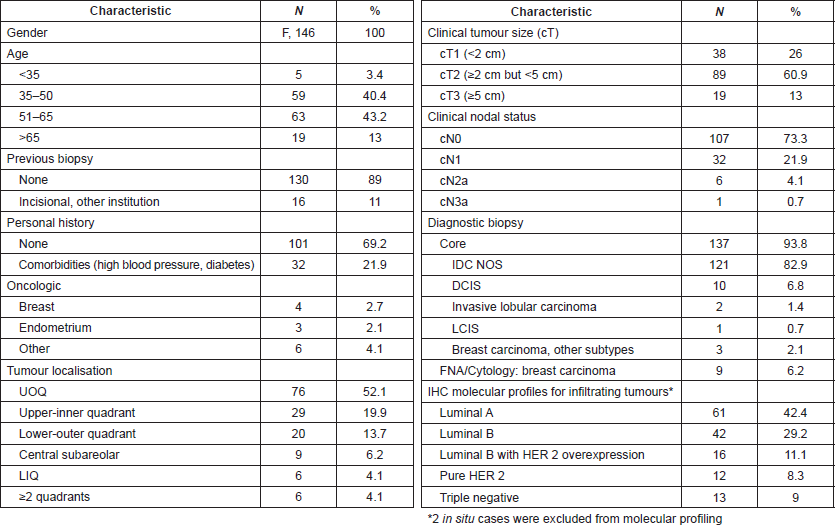
Table 2. OPS characteristics and axillary management.
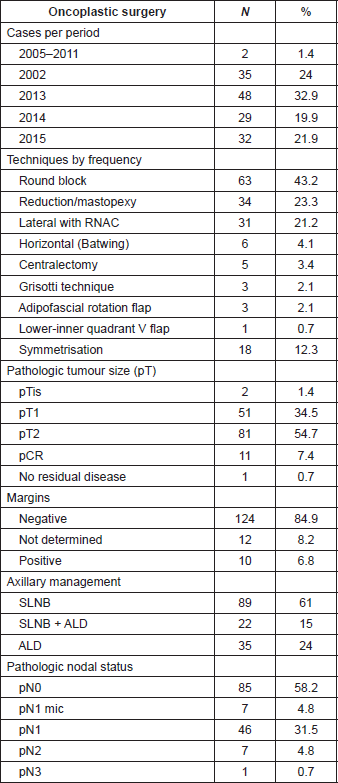
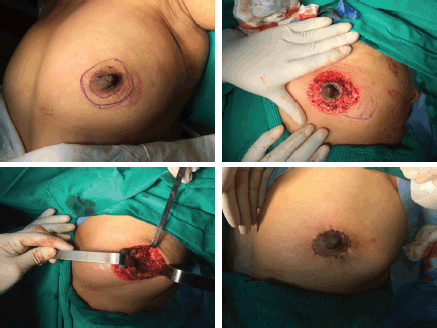
Figure 1. Round block technique. (A) Preop. markings: pattern (blue), tumour (red). (B) De-epithelisation of pattern tumour marking. (C) Tumour cavity after excision. (D) Final suture penrose drain (PRD).
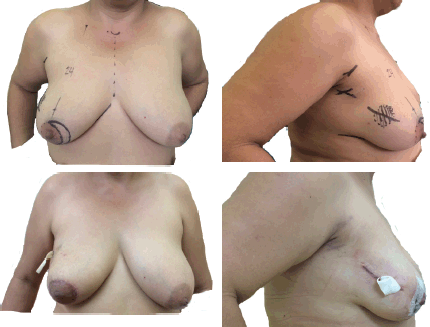
Figure 2. Lateral with re-centralisation of NAC. (A) Preop. Markings of lateral pattern with RNAC (solid line), frontal view. (B) Preop. markings of tumour (dotted line), side view. (c) First day postop, frontal view (with PRD). (D) First day postop, side view (with PRD).
In two cases (1.4%), the operative specimen showed DCIS in the form of mass >2 cm and other >5 cm. One invasive ductal carcinoma (IDC) case that was diagnosed by incisional biopsy showed no residual disease in the final operative specimen.
We achieved negative margins in 134 patients (93.2%) in a single procedure. Margins could not be defined in 12 cases given that 11 of them had pCR and 1 had incisional biopsy as described. In 124 cases (84.9%), negative margins were obtained after palpable tumour resections. The remaining 10 cases (6.8%) had positive margins, requiring a second surgery with final pathology free of malignancy. No patients had to return to the OR for complications.
Surgical management of the axilla showed 111 sentinel lymph node biopsies (SLNBs) (76%), of which 22 completed axillary lymph node dissection (ALD) (15%). Upfront ALD was done in 35 cases (24%). Final pathology correlated with surgical decision of conserving axillary lymph nodes with 85 cases of pN0 (58.2%) (Table 2).
Over 116 patients underwent upfront OPS (79.5%) and subsequently received the standard adjuvant systemic therapy. Following OPS, 139 patients (95.2%) received complimentary radiotherapy (RT), 112 patients (76.7%) received hormonal therapy and 103 patients (70.6%) received adjuvant chemotherapy (CT) as complementary treatments. Thirty patients (20.5%) had neoadjuvant therapies (Table 3).
In terms of relapses, 141 cases (96.6%) remained disease free while 5 cases showed the following: 1 local recurrence (0.7%), 2 local and distant recurrence (1.4%) and 2 distant recurrences (1.4%). In terms of mortality, 143 cases remained free of malignancy and 3 cases died (2.1%); 2 had received neoadjuvant chemotherapy and then presented with disease progression (one HER 2 treated without anti-Her2 and one Luminal A case) to bones and lungs, respectively, while the other case died of non-neoplastic causes.
Discussion
BC incidence is rising globally [15]. Latin American countries like Peru are no exception. The population-based cancer surveillance system of Lima for the period 2004–2005 showed age-adjusted incidence rate (AAIR) of 33.8 cases per 100 thousand women [16], with 3,065 incident cases (only 5.6% of DCIS cases versus USA where DCIS reaches 20–25% [17]). For the period 2010–2012, the registry showed 6,413 incident cases with an AAIR of 40.9 cases per 100 thousand women [18]. Perú´s INEN is located in Lima and records between 2006 and 2015 showed an average of 1,231 new BC cases per year [19].
Since the 1990s [10, 20], the evolution of reconstructive surgical techniques started focusing on BCT deformities [12] and gave way for coupling mammoplasty techniques (during the resective operation) for preventing sequelae using Benelli´s round block [6, 7], vertical patterns like reduction/mastopexy [8], common sense surgical approaches for hidden scars [21] and knowledge about applications and limits of them [14]. All of these contributions have shaped the OPS philosophy to a standarised mapping of the breast by prone-deformity territories and proposing the best OPS technique by tumour/quadrants locations [13, 22, 23]. Even with the well-known utility from neoadjuvant treatment applied to BCT [24, 25], we have avoided resorting to mastectomy and used OPS with presentations like locally advanced disease (taking into account the tumour biology) if a favourable response is achieved and breast conservation can be maximised at its best [26].
Numerous proposals have expanded the OPS range of techniques in the literature [27–39], but it is important to highlight the factors that guide them to success:
(a) The surgeon must be trained under the OPS theoretical–practical model [40] to understand the importance of breast anatomy and pedicles used by plastic surgery, breast segments proposed by Acea [22] and according to the complexity levels (I–II) proposed by Clough for a proper technique selection that suits the patient and the glandular density of the breast [13, 41, 42].
(b) The patient must understand the benefits, risks and alternatives of OPS so that they may provide informed consent [43]. This includes an understanding of the co-morbidities and other risk factors like smoking or diabetes [23].
Rietjens et al [44] calculated the volume of the operative specimen by multiplying length, width and height. Volume was considered by Garces et al [45, 46] and demonstrated that in spite of higher volumetric resections, OPS achieved excellent aesthetics as well as fewer re/excisions for positive margins. Table 4 summarises the versatility of OPS techniques used in European and Latin American publications.
Table 3. Oncologic treatment characteristics.
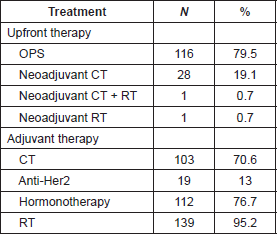
Table 4. Data comparison from literature between OPS cases reported by different countries.

An abstract presented at the annual meeting of the American Society of Breast Surgeons 2017 as a poster by the present article’s authors showed a low number of complications (similar to published literature) for seven OPS techniques performed for both benign and malignant diseases [47]. However in our study, the number of complications was not obtained. We estimate that complications such as seroma, haematoma, dehiscence, and wound infections arose in less than 10% of the cases and were managed on an outpatient basis.
The oncological long-term results of a subgroup of patients in our database are very encouraging with DFS and OS comparable to BCT [48].
Disadvantages of the study
The 2005–2015 period showed more than 1,206 breast-conserving surgeries in medical charts, of which 806 patients were operated on due to a BC cause. More than 300 cases underwent OPS for different reasons. However, some patients who had received resective surgery previously at another institution with OPS techniques or patients who required complimentary surgery for re-excision or axillary staging were operated on using the OPS approach at INEN, therefore being excluded by our criteria from the study. We also excluded other patients with final pathology reports showing benign tumours (benign Phyllodes, breast lipomas, complex cysts and papillary breast tumours), other malignant non-carcinoma (breast carcinosarcoma) BC, but where the surgical report had missing information about the OPS technique. It is essential to have a standardised perioperative order for the registry of data on clinical charts as well as a surgical report detailing the OPS technique. The technical OPS aspects must be respected to avoid losing valuable information, as well as to report complications in the postoperative follow-up.
Conclusions
OPS techniques are a new challenge for breast surgeons. Training and proper patient selection are key to maximise aesthetic and oncologic results for the satisfaction of both patients and surgeons.
Conflicts of interest
None of the authors has any financial interests to disclose.
Acknowledgments
Special thanks to our mentors at INEN, Benigno Acea and Krishna Clough.
References
1. Barker C (2010) Genius on the edge: the bizarre double life of Dr. William Stewart Halsted J Clin Invest 120(7) 2253 https://doi.org/10.1172/JCI43427 PMCID: 2898614
2. Halsted WS (1894) I. The results of operations for the cure of cancer of the breast performed at the Johns Hopkins Hospital from June, 1889, to January, 1894 Ann Surg 20(5) 497–555 https://doi.org/10.1097/00000658-189407000-00075 PMID: 17860107 PMCID: 1493925
3. Fisher B, Anderson S, and Bryant J, et al (2002) Twenty-year follow-up of a randomized trial comparing total mastectomy, lumpectomy, and lumpectomy plus irradiation for the treatment of invasive breast cancer N Engl J Med 347(16) 1233–1241 https://doi.org/10.1056/NEJMoa022152 PMID: 12393820
4. Veronesi U, Cascinelli N, and Mariani L, et al (2002) Twenty-year follow-up of a randomized study comparing breast-conserving surgery with radical mastectomy for early breast cancer N Engl J Med 347(16) 1227–1232 https://doi.org/10.1056/NEJMoa020989 PMID: 12393819
5. Veronesi U, Marubini E, and Mariani L, et al (2001) Radiotherapy after breast-conserving surgery in small breast carcinoma: long-term results of a randomized trial Ann Oncol 12(7) 997–1003 https://doi.org/10.1023/A:1011136326943 PMID: 11521809
6. Benelli L (1990) A new periareolar mammaplasty: the ‘round block’ technique Aesthetic plast surg 14(2) 93–100 https://doi.org/10.1007/BF01578332 PMID: 2185619
7. Benelli L (2011) Periareolar benelli mastopexy and reduction: the ‘Round Block’ Surgery of The Breast: Principles and Art. 2 3rd edn, eds S Spear, SC Willey, GL Robb, DC Hammond, and MY Nahabedian (Philadelphia: Lippincott Williams & Wilkins) pp 960–971
8. Hammond D (2011) Reduction mammaplasty and mastopexy: general considerations Surgery of The Breast: Principles and Art. 2 3rd edn, eds S Spear, SC Willey, GL Robb, DC Hammond, and MY Nahabedian (Philadelphia: Lippincott Williams & Wilkins) pp 955–959
9. Joyce CW, Joyce KM, and Sugrue CM, et al (2014) Plastic surgery and the breast: a citation analysis of the literature Plastic Reconstr Surg Glob Open 2(11) e251 https://doi.org/10.1097/GOX.0000000000000202
10. Galimberti V, Zurrida S, and Zanini V, et al (1993) Central small size breast cancer: how to overcome the problem of nipple and areola involvement Eur J cancer 29A(8) 1093–1096 https://doi.org/10.1016/S0959-8049(05)80294-1 PMID: 8518018
11. Lebovic GS (2010) Oncoplastic surgery: a creative approach to breast cancer management Surg Oncol Clin N Am 19(3) 567–580 https://doi.org/10.1016/j.soc.2010.04.003 PMID: 20620928
12. Clough KB, Cuminet J, and Fitoussi A, et al (1998) Cosmetic sequelae after conservative treatment for breast cancer: classification and results of surgical correction Ann Plast Surg 41(5) 471–481 https://doi.org/10.1097/00000637-199811000-00004 PMID: 9827948
13. Clough KB, Ihrai T, and Oden S, et al (2012) Oncoplastic surgery for breast cancer based on tumour location and a quadrant-per-quadrant atlas Br J Surg 99(10) 1389–1395 https://doi.org/10.1002/bjs.8877 PMID: 22961518
14. Acea-Nebril B (2005) Conservative oncoplastic surgery in breast cancer. Indications and limitations to its application Cir Esp 78(1) 12–18 https://doi.org/10.1016/S0009-739X(05)70878-2
15. Ferlay J, Bray F, and Pisani P, et al (2013) GLOBOCAN 2012: Cancer Incidence, Mortality and Prevalence Worldwide (Lyon: International Agency for Reseach on Cancer Cancerbase)
16. Instituto Nacional de Enfermedades Neoplasicas (2014) Registro de Cancer de Lima Metropolitana: Estudio de Incidencia y Mortalidad 2004–2005 (vol 4) (Lima: INEN)
17. Badruddoja M (2012) Ductal Carcinoma in situ of the breast: a surgical perspective Int J Surg Oncol 2012 https://doi.org/10.1155/2012/761364 PMID: 22988495 PMCID: 3440876
18. Instituto Nacional de Enfermedades Neoplasicas (2016) Registro de Cancer de Lima Metropolitana: Estudio de Incidencia y Mortalidad 2010–2012 (vol 5) (Lima: INEN)
19. INEN Ed. Nuevos Casos de Cáncer en el INEN del 2006 al 2015 [http://www.inen.sld.pe/portal/documentos/pdf/estadistica/datos_estadisticos/17042017_Casos_Nuevos_de_Cáncer_ en_el_INEN_del_2006_al_2015.pdf]
20. Clough KB, Nos C, and Salmon RJ, et al (1995) Conservative treatment of breast cancers by mammaplasty and irradiation: a new approach to lower quadrant tumors Plast Reconstr Surg 96(2) 363–370 https://doi.org/10.1097/00006534-199508000-00015 PMID: 7624409
21. Acea Nebril B (2010) ‘Scarless’ surgery in the treatment of breast cancer Cir Esp 87(4) 210–217 https://doi.org/10.1016/j.ciresp.2009.09.009
22. Acea Nebril B (2011) Breast segments: a model for the prevention of deformities in conservative surgery for breast cancer Cir Esp 89(9) 574–580 https://doi.org/10.1016/j.ciresp.2011.04.022 PMID: 21737068
23. Clough KB, Kaufman GJ, and Nos C, et al (2010) Improving breast cancer surgery: a classification and quadrant per quadrant atlas for oncoplastic surgery Ann Surgical Oncol 17(5) 1375–1391 https://doi.org/10.1245/s10434-009-0792-y
24. Chen AM, Meric-Bernstam F, and Hunt KK, et al (2004) Breast conservation after neoadjuvant chemotherapy: the MD Anderson cancer center experience J Clin Oncol 22(12) 2303–2312 https://doi.org/10.1200/JCO.2004.09.062 PMID: 15197191
25. Kuerer HM, Newman LA, and Smith TL, et al (1999) Clinical course of breast cancer patients with complete pathologic primary tumor and axillary lymph node response to doxorubicin-based neoadjuvant chemotherapy J Clin Oncol 17(2) 460–469 https://doi.org/10.1200/JCO.1999.17.2.460 PMID: 10080586
26. Clough KB, van la Parra RFD, and Thygesen HH, et al (2017) Long-term results after oncoplastic surgery for breast cancer: a 10-year follow-up Ann Surg https://doi.org/10.1097/SLA.0000000000002255 PMID: 28448389
27. Acea Nebril B, Builes Ramirez S, and Garcia Novoa A, et al (2016) Rotational flaps in oncologic breast surgery. Anatomical and technical considerations Cir Esp 94(7) 372–378 https://doi.org/10.1016/j.ciresp.2016.03.004 PMID: 27140865
28. Acea-Nebril B, Cereijo-Garea C, and Garcia-Novoa A, et al ( 2017) The role of oncoplastic breast reduction in the conservative management of breast cancer: complications, survival, and quality of life J Surg Oncol 115(6) 679–686 https://doi.org/10.1002/jso.24550 PMID: 28083875
29. Aljarrah A, Nos C, and Nasr R, et al (2012) Updated follow-up of patients treated with the oncoplastic ‘Crescent’ technique for breast cancer Breast 21(4) 475–479 https://doi.org/10.1016/j.breast.2011.11.004
30. Anderson BO, Masetti R, and Silverstein MJ (2005) Oncoplastic approaches to partial mastectomy: an overview of volume-displacement techniques Lancet Oncol 6(3) 145–157 https://doi.org/10.1016/S1470-2045(05)01765-1 PMID: 15737831
31. Clough KB, Oden S, and Ihrai T, et al (2013) Level 2 oncoplastic surgery for lower inner quadrant breast cancers: the LIQ-V mammoplasty Ann Surg Oncol 20(12) 3847–3854 https://doi.org/10.1245/s10434-013-3085-4 PMID: 23838910
32. Lin J, Chen DR, and Wang, et al (2016) Oncoplastic surgery for upper/upper inner quadrant breast cancer PLoS ONE 11(12) e0168434 https://doi.org/10.1371/journal.pone.0168434 PMID: 28030581 PMCID: 5193402
33. Malka I, Villet R, and Fitoussi A, et al (2010) Oncoplastic conservative treatment for breast cancer (part 3): techniques for the upper quadrants J Visc Surg 147(6) e365–e372 https://doi.org/10.1016/j.jviscsurg.2010.08.017 PMID: 21095177
34. Malka I, Villet R, and Fitoussi A, et al (2010) Oncoplastic conservative treatment for breast cancer (part 4): techniques for inner quadrants J Visc Surg 147(6) e373–e376 https://doi.org/10.1016/j.jviscsurg.2010.09.005 PMID: 21095175
35. Malka I, Villet R, and Fitoussi A, et al (2010) Oncoplastic conservative treatment for breast cancer (part 2): techniques for the inferior quadrants J Visc Surg 147(5) e305–e315 https://doi.org/10.1016/j.jviscsurg.2010.08.011 PMID: 20933487
36. Malka I, Villet R, and Fitoussi A, et al (2010) Oncoplastic conservative treatment for breast cancer. Part 1: generalities and techniques for the external quadrants J Visc Surg 147(4) e233–e237 https://doi.org/10.1016/j.jviscsurg.2010.07.004 PMID: 20813622
37. Massey EJ, Gouveia PF, and Nos C, et al (2013) A new level 1 oncoplastic technique for breast conserving surgery: rotation glandular flap Breast 22(2) 186–189 https://doi.org/10.1016/j.breast.2013.01.012 PMID: 23465715
38. Moustafa A and Fakhr I (2014) Outcome of different oncoplastic surgical (OPs) techniques for centrally located breast cancer (CLBC) J Egypt Natl Canc Inst 26(4) 203–209 https://doi.org/10.1016/j.jnci.2014.10.003 PMID: 25467388
39. Silverstein MJ, Savalia N, and Khan S, et al (2015) Extreme oncoplasty: breast conservation for patients who need mastectomy Breast J 21(1) 52–59 https://doi.org/10.1111/tbj.12356 PMID: 25583035 PMCID: 4303932
40. Weber WP, Soysal SD, and El-Tamer M, et al (2017) First international consensus conference on standardization of oncoplastic breast conserving surgery Breast Cancer Res Treatment 165(1) 139–149 https://doi.org/10.1007/s10549-017-4314-5
41. Clough KB, Benyahi D, and Nos C, et al (2015) Oncoplastic surgery: pushing the limits of breast-conserving surgery Breast J 21(2) 140–146 https://doi.org/10.1111/tbj.12372 PMID: 25676776
42. Clough KB, Gouveia PF, and Benyahi D, et al (2015) Positive margins after oncoplastic surgery for breast cancer Ann Surg Oncol 22(13) 4247–4253 https://doi.org/10.1245/s10434-015-4514-3 PMID: 25893409
43. Acea Nebril B (2007) Patient information in oncoplastic surgery for breast cancer Cir Esp 82(4) 204–208 https://doi.org/10.1016/S0009-739X(07)71707-4 PMID: 17942044
44. Rietjens M, Urban CA, and Rey PC, et al (2007) Long-term oncological results of breast conservative treatment with oncoplastic surgery Breast 16(4) 387–395 https://doi.org/10.1016/j.breast.2007.01.008 PMID: 17376687
45. Garces M, Mendoza G, and Falla M, et al (2013) Cirugía oncoplástica de la mama: Primera experiencia en el Instituto Nacional de Enfermedades Neoplásicas Carcinos 3(2)
46. Garces M, Mendoza G, and Falla M, et al (2015) Cirugía oncoplástica de mama: experiencia en un hospital público peruano Carcinos 5(2) 39–46
47. Calderon G, Ziegler G, and Cotrina JM, et al (2017) Oncoplastic breast surgery experience in a Latin American Cancer Institute (2017 Annual Meeting Official Proceedings, Volume XVIII) Ann Surgical Oncol 24(2) 203–528
48. Chavez M, Ziegler G, and Cotrina M, et al (2017) Oncological results of oncoplastic surgery: long-term follow-up of patients treated at a Latin America oncology institute: a cohort analysis Revista de Senología y Patología Mamaria 30(4) 170–178 https://doi.org/10.1016/j.senol.2017.09.005
49. Acea-Nebril B, Lopez S, and Cereijo C, et al (2005) Impact of conservative oncoplastic techniques in a surgery program for women with breast cancer Cir Esp 78(3) 175–182 https://doi.org/10.1016/S0009-739X(05)70912-X
50. De Lorenzi F, Hubner G, and Rotmensz N, et al (2016) Oncological results of oncoplastic breast-conserving surgery: long term follow-up of a large series at a single institution: a matched-cohort analysis Eur J Surg Oncol 42(1) 71–77 https://doi.org/10.1016/j.ejso.2015.08.160






